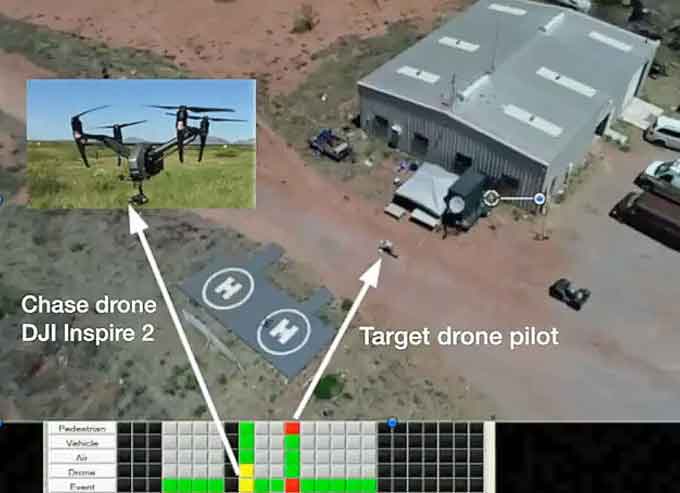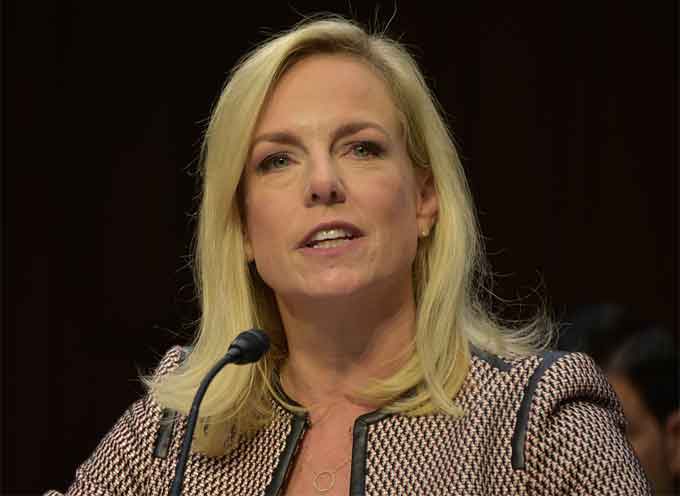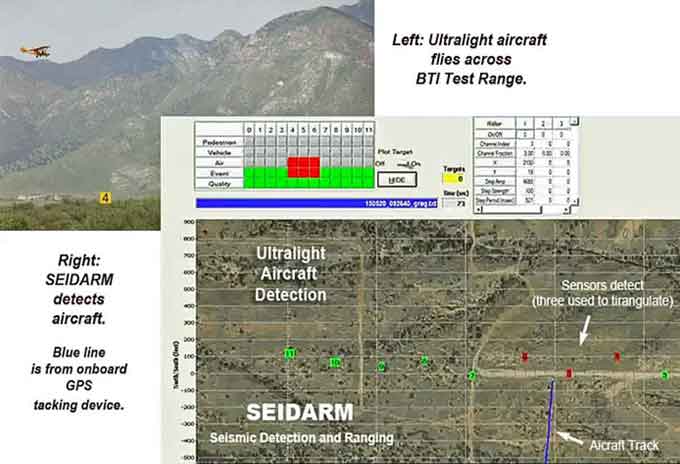
American Border Patrol (ABP) demonstrated an electronic border security system for U.S. Senate candidates on Saturday, July 7th, at the American Border Patrol Test Range in Hereford, Arizona, which is on the Arizona/Mexico border.
 The American Border Patrol is the only non-governmental organization (NGO) that monitors the border on a regular basis – mostly by air.
The American Border Patrol is the only non-governmental organization (NGO) that monitors the border on a regular basis – mostly by air.
ABP has three aircraft, each designed for a specialized mission and operates from a ranch right on the Mexican border in Southeastern Arizona in the heart of a major smuggling corridor.
The stand-alone SEIDARM system, is a seismic detection and ranging mechanism which when used with a special acoustic sensor called MAUI, is very effective at detecting small, unmanned aerial systems (sUAS) – or drones, persons and/or vehicles along the U.S. Mexican border.
(See a video of a June 21st demonstration of SEIDARM MAUI at the AFWERX FUSION event in Las Vegas. Courtesy of Glenn Spencer and YouTube. Border security systems are used to detect and tracks anything trying to cross – People, Low Flying Aircraft, small Unmanned Aerial Systems, Vehicles and Tunnels. Posted on Jun 27, 2018.)
In September, FBI Director Christopher Wray warned Congress that terrorist groups are looking to use drones to wage terror attacks in the U.S.
“I think we do know that terrorist organizations have an interest in using drones,” Wray testified in a hearing for the Senate Homeland Security and Government Affairs Committee.
“We’ve seen that overseas already with growing frequency. I think the expectation is that it’s coming here imminently.”
“I think they are relatively easy to acquire, relatively easy to operate, and quite difficult to disrupt and monitor.”
(FBI Director Christopher Wray has warned US Congress on Wednesday of imminent terrorist drone attacks on the US soil. Courtesy of C-Span, Chuck Ross and YouTube. Posted on Sep 27, 2017.)
The seriousness of the threat of border drones was also recently underlined by a Washington Post opinion piece by Department of Homeland (DHS) Security Chief Kirstjen M. Nielsen (as follows.)
The U.S. isn’t prepared for the growing threat of drones
By Kirstjen M. Nielsen, July 4
Kirstjen M. Nielsen is secretary of homeland security.

Drone technology offers the potential to change our world — from enabling historic transformations in e-commerce to faster emergency response.
But the technology also has a dark side.
It can be used to spy on us, to threaten our critical infrastructure, or to attack crowds and public places.
For years, the Department of Homeland Security has worried about the dangers of unmanned aerial systems, and we have sought the legal authority to protect Americans against corrupted aerial devices.
Today I have a pressing message for Congress: Time is running out.
As secretary of homeland security, I can tell you that threat is outpacing our ability to respond. Without congressional action, the U.S. government will remain unable to identify, track and mitigate weaponized or dangerous drones in our skies.
Just last month, officials at U.S. Customs and Border Protection reported a spike in the use of drones at our borders.
Transnational criminals are undoubtedly exploiting these systems to search for security gaps so they can avoid our officers and sneak into the country undetected.
Criminals are also using them to smuggle drugs.
Last year, Border Patrol agents arrested a 25-year-old man for using a drone to ferry tens of thousands of dollars’ worth of methamphetamine across the southwest border, raising the specter that other dangerous goods could be transported the same way.
(Learn More. 13 pounds of drugs seized, worth an estimated $50 thousand. Courtesy of Fox News and YouTube. Posted on Aug 21, 2017.)
Worse still, terrorist groups such as the Islamic State aspire to use armed drones against our homeland and U.S. interests overseas.
They have deployed bomb-laden aerial devices on the battlefield to surveil, disrupt and kill opposing forces, and they are sharing that expertise with others.
We have already worked with our partners to stop terrorist plots that could have involved drone technology.
(The Islamic State’s use of drones is increasingly sophisticated, a worrying battlefield development with implications for other insurgencies. Courtesy of The Washington Post and YouTube. Posted on May 11, 2017.)
But we need to acknowledge that our first and last chance to stop a malicious drone might be during its final approach to a target.
Unfortunately, the laws on the books today were not written with weaponized drones in mind.
As a result, the nation’s two biggest law enforcement departments — DHS and the Justice Department — have their hands tied when it comes to protecting Americans.

While we do have certain limited capabilities for scanning the skies for rogue drones, we largely lack the updated tools and most sophisticated authorities to monitor and mitigate inbound threats.
For instance, DHS should be able to access signals being transmitted between a nefarious drone and its ground controller to accurately geolocate both quickly.
This could allow authorities to take control of the device or stop its operator on the ground to prevent a potential attack.
Yet current legal constraints prohibit us from doing so and from addressing other drone-threat scenarios, such as drones configured to operate without a human operator, which will require a separate set of solutions.
Worse still, we are prevented from even testing certain drone-defense technologies where we really need them, such as in urban environments to protect large gatherings and public events.
Some in Congress recognize these problems and have stepped up. Sen. Ron Johnson (R-Wis.), Sen. Claire McCaskill (D-Mo.) and Rep. Michael McCaul (R-Tex.), among others, have championed legislative fixes to give DHS and the Justice Department the authority to develop, test and deploy advanced and effective counter-drone technology.
(According to a report by Gizmodo, the US Department of Homeland Security is asking Congress to approve new legislation that would increase the agency’s ability to surveil, research, and attack drones flying in US airspace. Courtesy of Wochit News and YouTube. Posted on Jun 7, 2018.)
The Defense Department already has similar authorities to protect U.S. forces overseas and certain domestic facilities. But it’s time we had them to protect Americans here at home.
We cannot afford to wait.
Our enemies are aware of our vulnerabilities and eager to exploit them. So let’s stop admiring the problem and start solving it.
The House and Senate should approve a legislative fix at the earliest possible opportunity.
Drones will soon become a part of everyday life. Before then, let’s make sure they don’t become an everyday threat.
American Border Patrol’s Saturday demonstration showed exactly where the SEIDARM MAUI sensor detected the sUAS.
 Live demonstrations of SEIDARM including MAUI may be set for a later date.
Live demonstrations of SEIDARM including MAUI may be set for a later date.
During Saturday’s demonstration, SEIDARM directed drones called HERMES to intercept people and vehicles along a one-mile stretch of sensors.
SEIDARM can detect one person walking at five hundred feet, compared to 40 feet for existing Border Patrol ground sensors, according to ABP president Glenn Spencer.
It can distinguish between people, vehicles and aircraft.


















